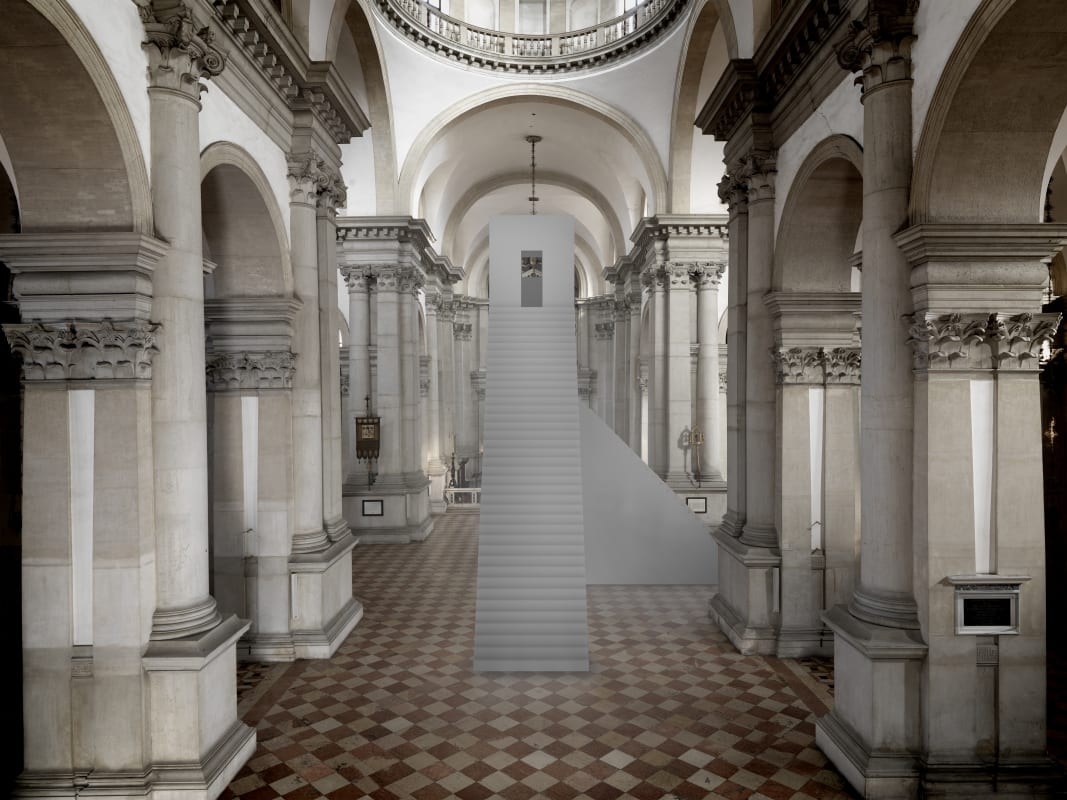Not Vital Biennale Architettura 2021
Not Vital presents SCARCH at Abbazia di San Giorgio Maggiore for an official collateral event at the 17th International Architecture Biennale.
Not Vital (1948) is a Swiss artist who lives and works in Sent, Beijing and Rio de Janeiro. His multifaceted practice, which includes sculpture, drawing, painting and architecture is influenced by his quasi-nomadic way of life. Such influence is threefold: it manifests in terms of iconography, materiality and localization. Adapting iconographic strategies of migration, and consisting of projects in regions that are often remote and hard to reach, such as the Chilean Patagonia, the island of Flores in Indonesia, or the Sahara desert in Niger, Vital’s practice is community-based, involving local craftmanship and local materials. The materialization of Vital’s projects, thus, is always influenced by the respective places and cultures they are embedded in. Identity and transformation, relocation and decontextualization have consequently evolved into central concepts within Vital’s oeuvre.
In the early 2000s, following an enduring preoccupation with the concept of the habitat, Vital expanded his practice to include built structures such as houses, schools, towers, bridges and tunnels. Coining the term SCARCH (Sculpture-Architecture), Vital began to blur the boundaries between sculpture and architecture, creating monumental structures that often serve either social or transcendental purposes. In the Sahara desert in Niger, for example, Vital built Makaranta (2003), a Koran-school which is conceived as a pyramid and accommodates up to 500 children, as well as House to Watch the Sunset (2005), a three-stories high building which exists for the sole purpose of contemplating the sunset.
Since 2005, House to Watch the Sunset has evolved to become a world spanning project, with one structure being erected on each continent. So far, Vital has realized House to Watch the Sunset in Niger using mud and straw, in the Brazilian Amazon using local wood, and in the Swiss Engadine mountains, using concrete made of local sand. Currently, Vital is working on a version made out of iron for the Mongolian Gobi desert, as well as one out of aluminum for the island of Fangasito in the Kingdom of Tonga.
While the materialization of House to Watch the Sunset is always influenced by its respective location, its structure and form consistently remain the same.
House to Watch the Sunset is 13 meters high, with each floor consisting of one room measuring 3 x 3 meters. The first floor has one door and one window, the second floor has one door and two windows, the third one door and three windows. None of the floors are connected to each other, and each floor can only be reached by its own external stairs.
With no infrastructure or services, no electricity or water, House to Watch the Sunset does not serve the practical purpose of daily living. Instead, it is conceived as a global and community-based project whose result is a sculptural architecture which functions as a window onto the world.
In 2020, fifteen years after the realization of the first iteration, the fifth and last iteration of House to Watch the Sunset will be realized in aluminum and exhibited within the Abbey of San Giorgio Maggiore, before traveling by waterways to Fangasito, Tonga.
In addition to House to Watch the Sunset, Vital’s exhibition at the Abbey of San Giorgio Maggiore will also include five other works, which together provide insight into Vital’s multifaceted body of work.






















































































































































































